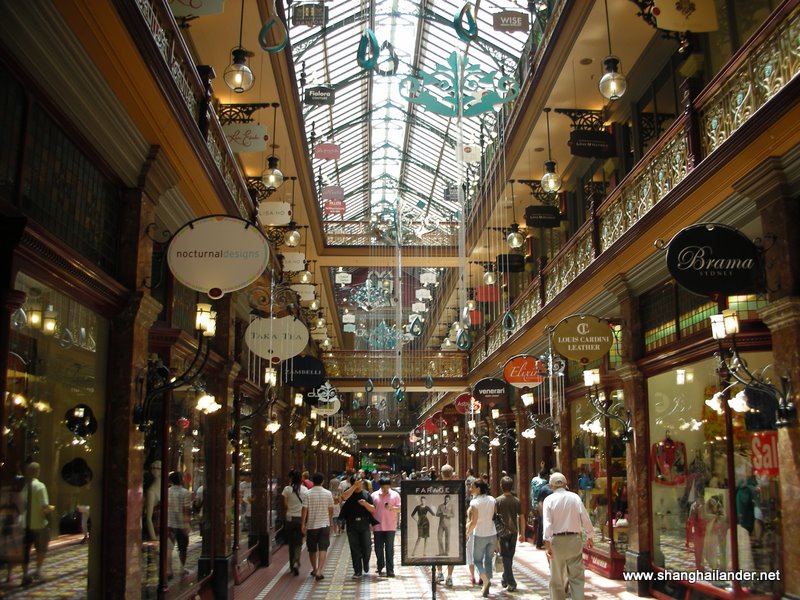 As described in a previous post, the corner or Nanjing Lu and Shi Men lu is on for a massive reconstruction. All old buildings in the area will be destroyed and surely replaced by the usual skyscraper with a mix of shopping center, office building and hotel or serviced apartments. The aim here is probably not create a nice livable environment but to make an architecture that will look great on brochures, a copy of Singapore or Hong Kong… most importantly maximizing profit from the real estate operation with little regard for urban design or preservation of historic architecture.
As described in a previous post, the corner or Nanjing Lu and Shi Men lu is on for a massive reconstruction. All old buildings in the area will be destroyed and surely replaced by the usual skyscraper with a mix of shopping center, office building and hotel or serviced apartments. The aim here is probably not create a nice livable environment but to make an architecture that will look great on brochures, a copy of Singapore or Hong Kong… most importantly maximizing profit from the real estate operation with little regard for urban design or preservation of historic architecture.
Coming back from a long vacation in Australia, the difference between urban development in Sydney or Shanghai is striking. The center of both cities was created in the 1910’s to 1930’s leaving a mix of various styles from the period, from sandstone beaux-arts to innovative Art Deco. Both of them had to re-deploy there city center to accommodate needs of the early 21st century into architecture from the early 20th century. Both cities are facing a very strong increase of population and demand for offices and residential buildings (though the pressure was much higher in Shanghai until recently). Despite these similarities, the difference in development is striking. Sydney’s goal seems to preserve as much as possible and to continue using old buildings that can be kept, creating a mix of old and new keeping the heritage while modernizing the city. Developments such as Queen Victoria Building, arcades on Georges Street (picture above) and the Rock’s area are probably the most well known examples.
Shanghai is still in the process of transforming the city, though after years of work we can surely have an idea about the result by now. The emphasis has been on keeping “troffee” old buildings in the middle of a concrete forest, NOT actually using and preserving heritage buildings at the same time. Although preservation seems to get more attention nowadays, we are still far from the great balance achieved by Australia’s main city into keeping the old while adapting for the new. Visiting Sydney gives a great idea of how Shanghai could have been transformed. Hopefully, it’s not too late for the remaining parts.
17-7-11
Hello Hugues,
I spent today looking through your wonderful website & came upon your piece here on Sydney’s Architectural Heritage & how there is a great mix of new with old, & a respect & preservation of buildings built more than a century,even 2 centuries ago. Did you get the opprotunity to go to Melbourne, where we too maintain our varied collections of the past? Yes, we have a great love of our precious architecture & keep it cared for wherever possible, building the new construction behind the old facade. Each of our country’s cities has a similar ethos. At times, even the Building Unions get involved in making sure these splendid buildings are kept safe & sound.It is a travisty that the City Fathers of Shanghai have not realised the Goldmine they have in Old Shanghai Architecture. One cannot move forward without recognising & respecting one’s roots,& acknowledging the addition of alternate history,which goes to make up a great City such as Shanghai.The workmanship & attention to detail of its age old crafts, makes a City’s development along the way.I believe Shanghai developers will rou the day they demolished such perfect architectural History. Not just that of The European Settlements, but also the incredible ancient Chinese examples of stonework in buildings, streets & allyways. This is, after all, what people come to see & feel- the character & spirit of the past of one of the greatest nations on Earth. They can see tall buildings in their own country. A sad mistake? Some of the photos you have in your repertoir are beautiful, & I mourn the loss of these artefacts when & if they go, like much has already. Keep up the wonderful work that you do. I envy your ability to do so, but thank God you can.
Warmest regards,
Maria.